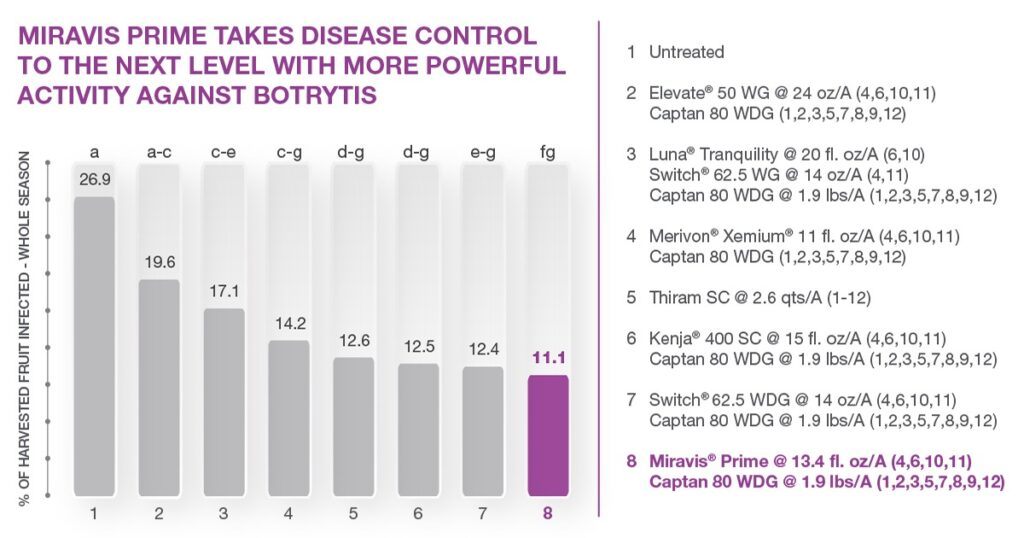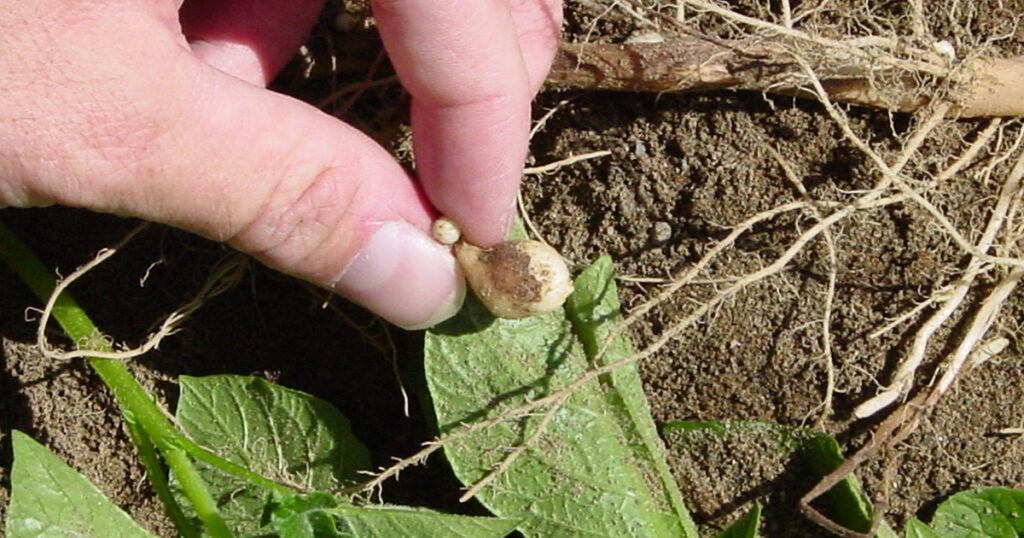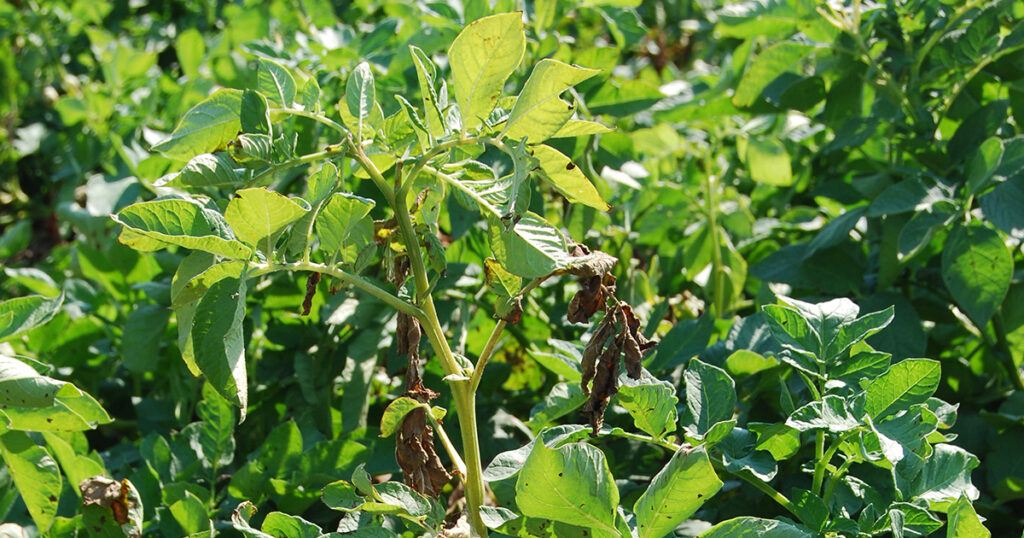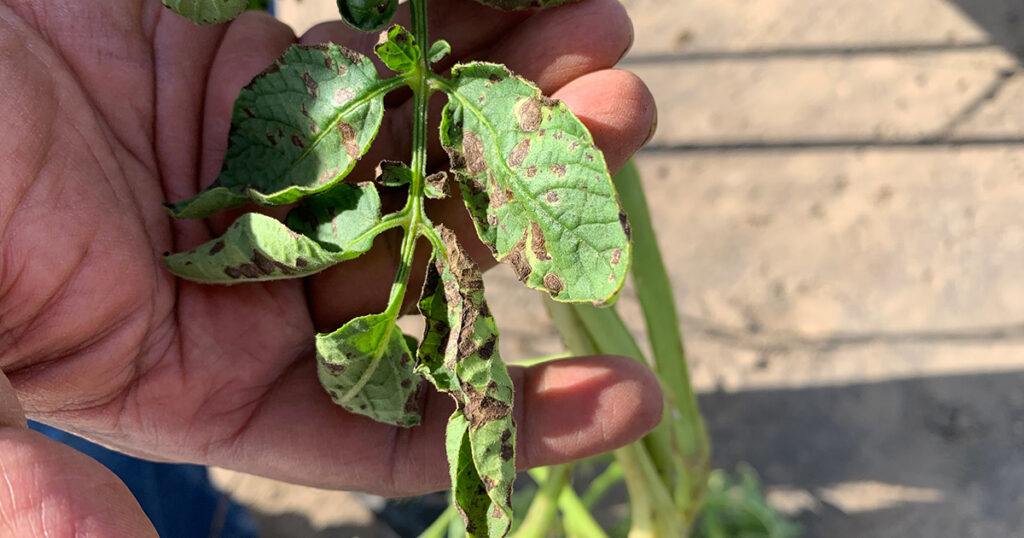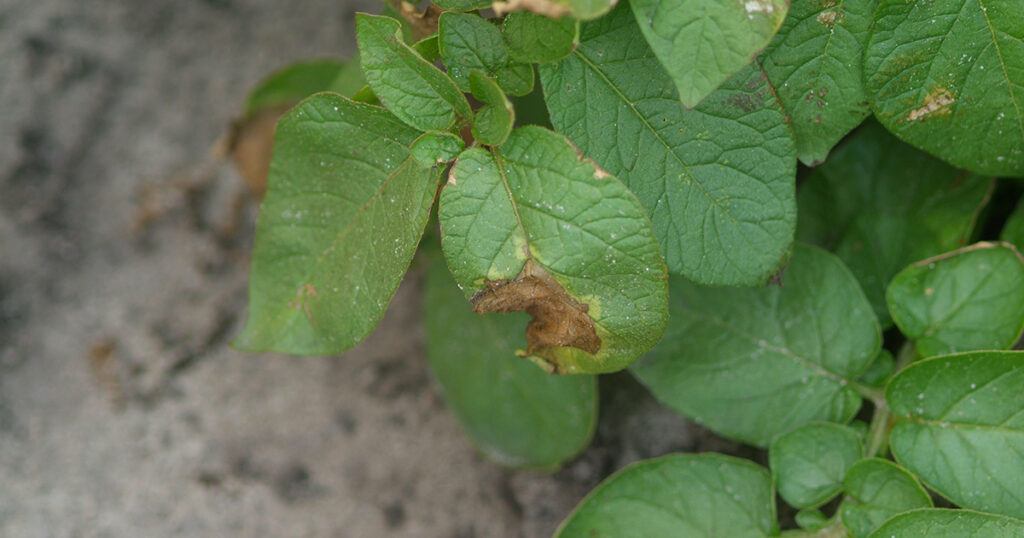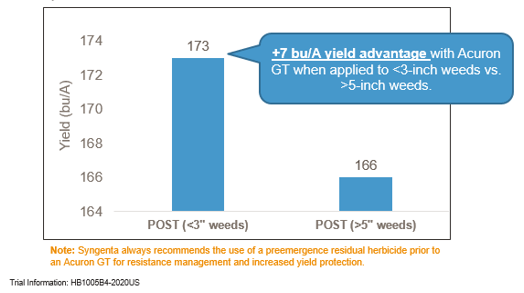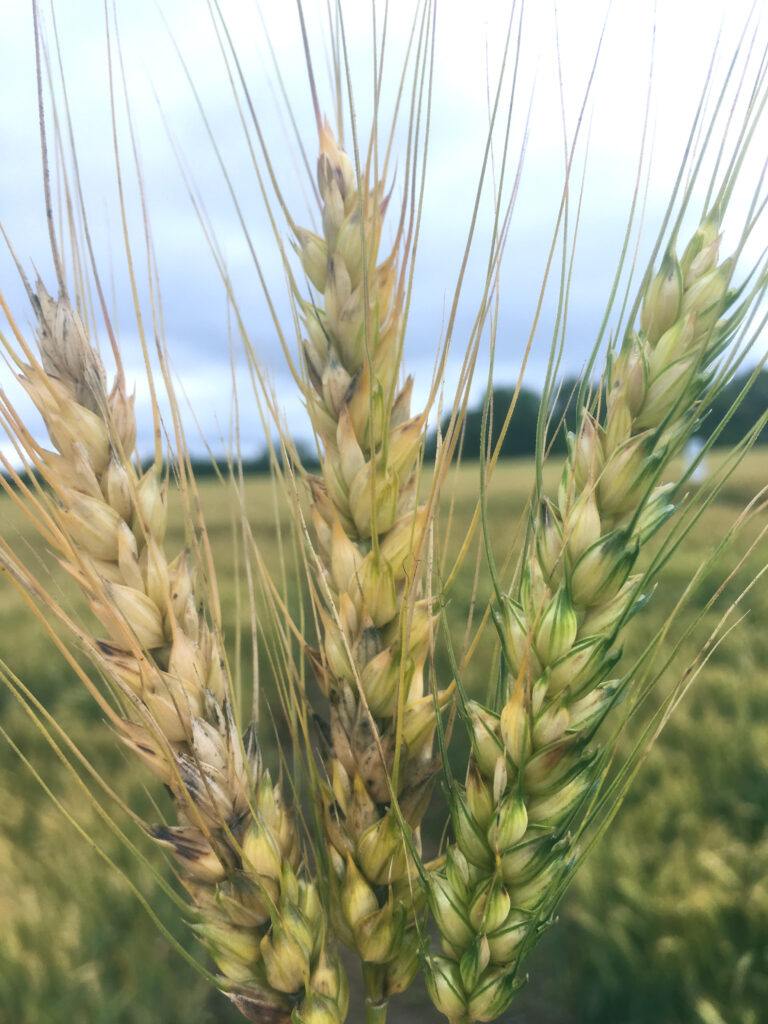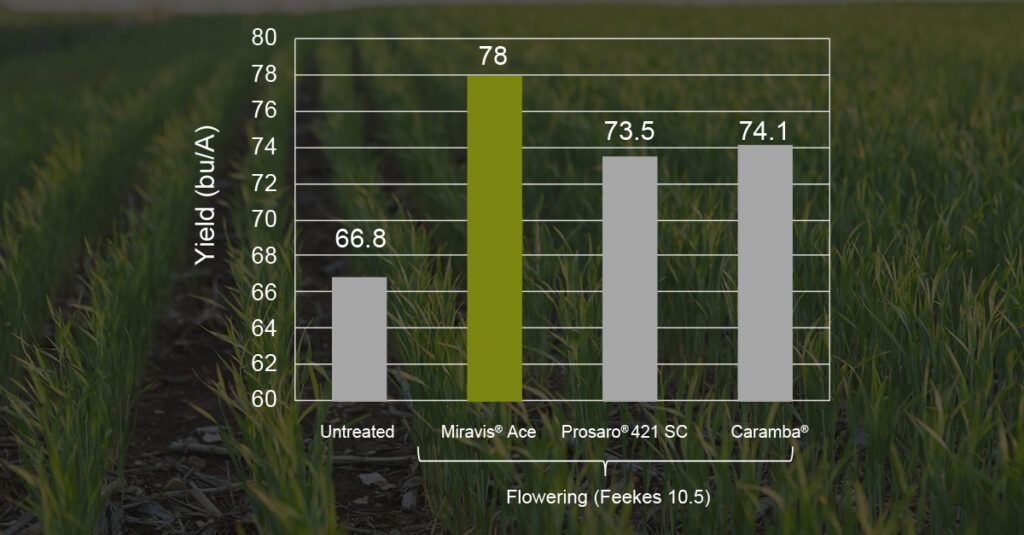Commonly grown pulse crops are susceptible to destructive foliar disease like Ascochyta blight, a fungus that can be very damaging to crops if left untreated. Entire growing seasons can be threatened if crops are left untreated, so it’s important to plan ahead to protect crops against this and other foliar diseases every growing season.
Ascochyta blight is caused by Ascochyta rabiei, a fungal pathogen that can be seed-borne and occur on infested crop residues. For Ascochyta infections to develop, it needs a combination of moisture and temperatures ranging from 41-86°F. Once the disease is established on one plant, it can spread in splashing water and windy conditions. Spores spread most quickly in cool, wet conditions.
Ascochyta may not become visible until 4-5 days after infection. As the disease progresses, lesions will appear on the leaves and stem which can lead to stem girdling. If left untreated, the disease can penetrate pods and infect seeds, reducing marketability and quality as a food item.
It is important to treat Ascochyta blight as it has been known to wipe out entire yields and affect yield quality. Foliar fungicide management requirements vary by crop variety and weather conditions.
Chickpeas
Using Miravis® Top fungicide can help prevent foliar diseases such as Ascochyta blight in chickpeas. Applications should be proactive and made prior to disease development.
Dry Field Peas
Miravis Top on dry field peas provides protection against numerous yield-robbing foliar diseases including Ascochyta blight. Miravis Top also targets other diseases like white mold, Alternaria blight, rust and powdery mildew. The first application of Miravis Top should be at R2 or full bloom.





